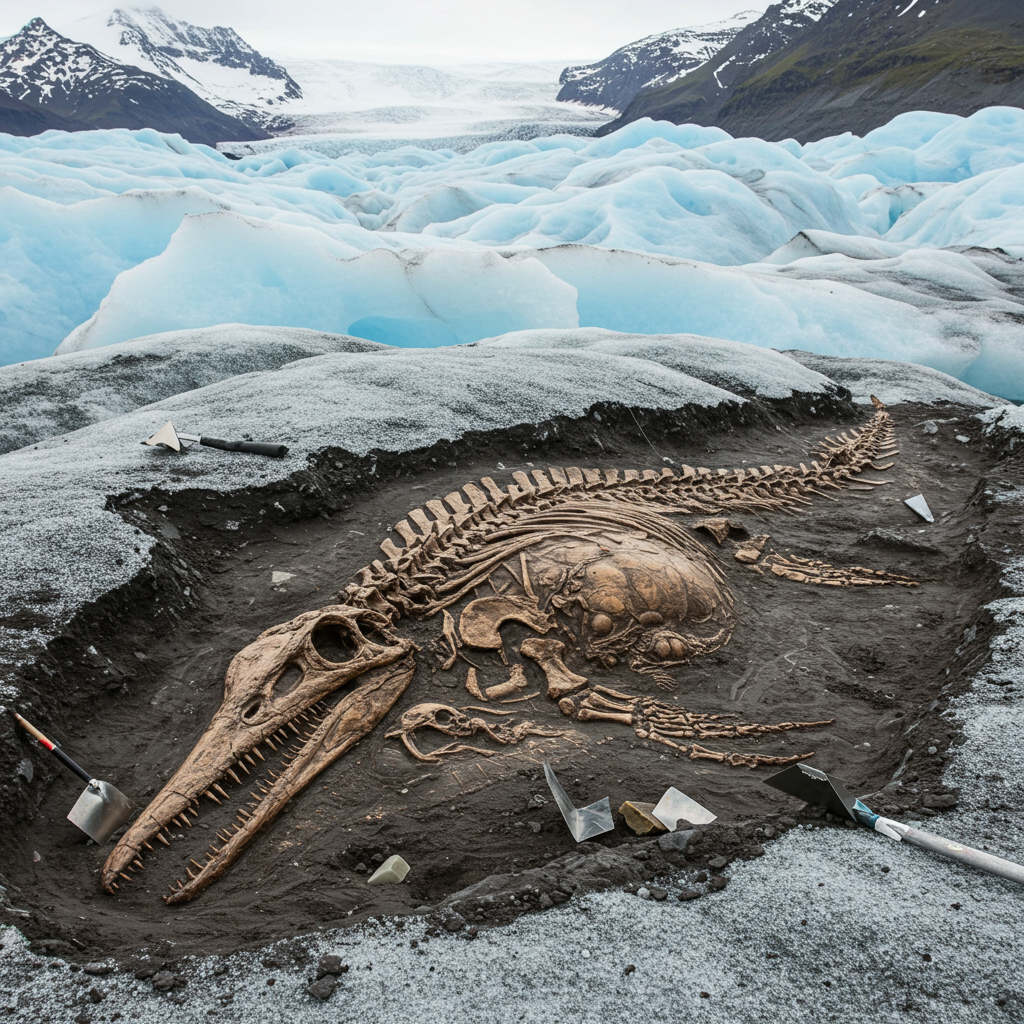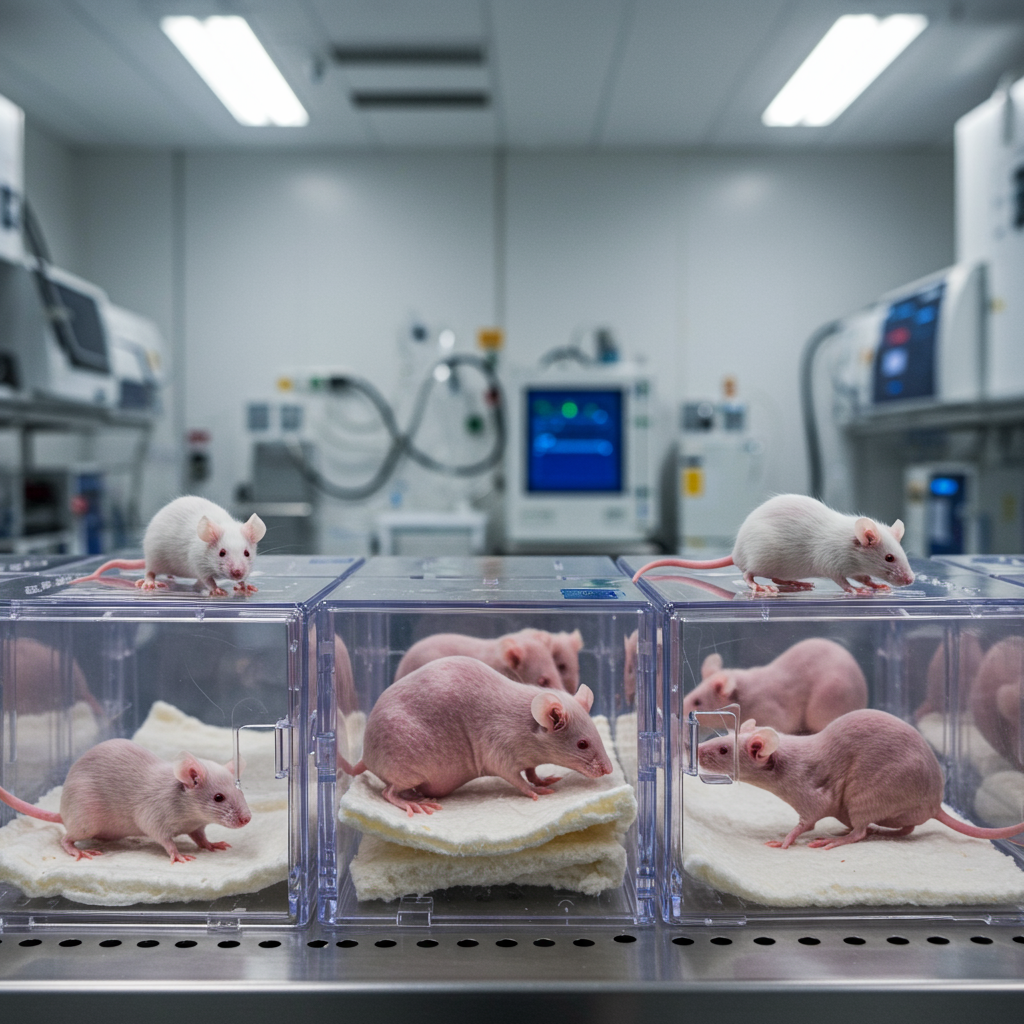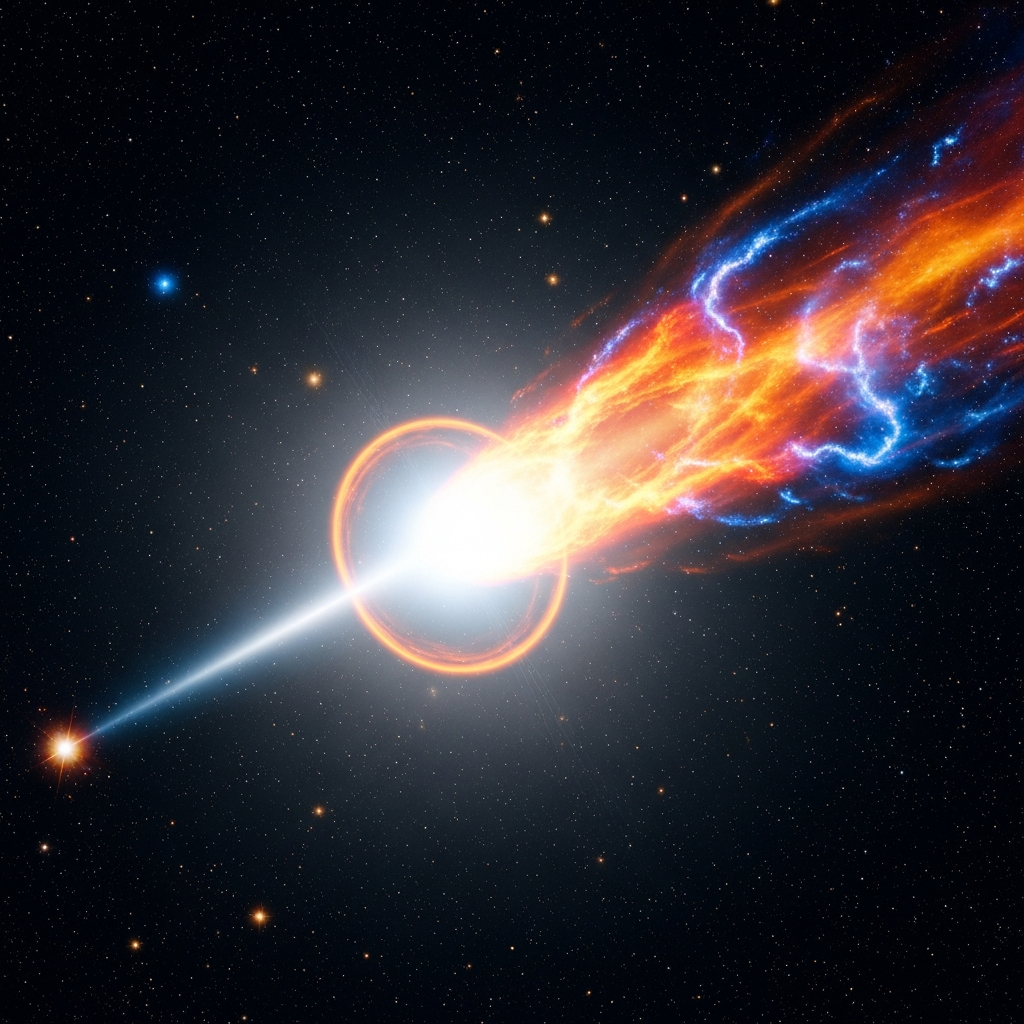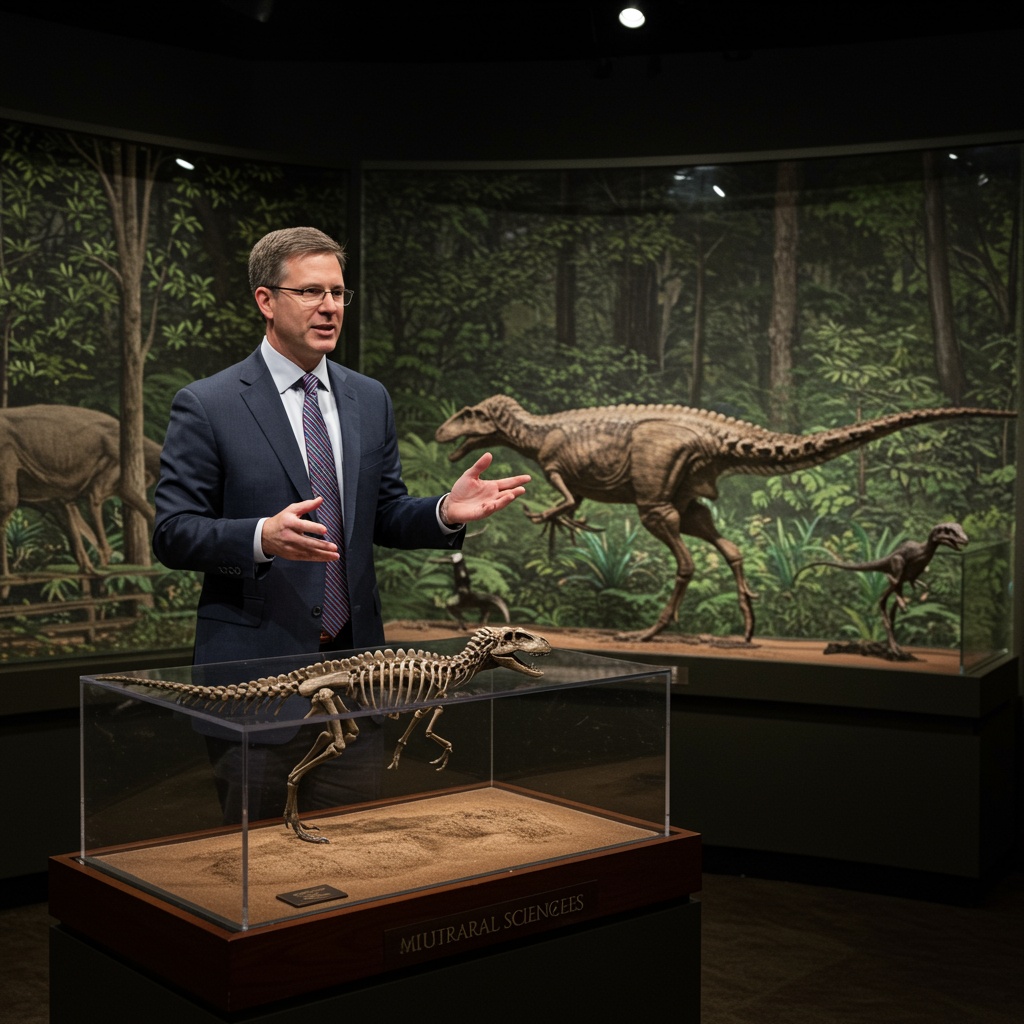Imagine an ancient sea, teeming with life, where giant marine reptiles hunted just as dinosaurs roamed the land. In a remarkable discovery that bridges the gap between deep time geology and prehistoric life, scientists have unearthed the fossil of a pregnant ichthyosaur in the rugged glacial landscape of southern Chile. Nicknamed “fiona,” this 131-million-year-old specimen is offering stunning insights into the life of these dolphin-like predators and the dramatic forces that shaped our planet during the breakup of supercontinents. Preserved with incredible detail, including not one, but two unborn babies, Fiona’s story is helping decode the secrets of an ocean born from cataclysm.
Fiona: A Window into the Cretaceous Seas
Found in the remote glacial fields of Chilean Patagonia, near the Tyndall Glacier within Torres del Paine National Park, the nearly intact skeleton belonged to an ichthyosaur, a type of marine reptile that thrived during the dinosaur era. This particular individual, affectionately named Fiona by researchers, lived approximately 131 million years ago during the Early Cretaceous period.
Ichthyosaurs were formidable predators of the ancient oceans, evolving sleek, streamlined bodies remarkably similar to modern dolphins or whales through a process called convergent evolution. Despite being reptiles, they adapted fully to marine life, breathing air at the surface and giving birth to live young in the water, rather than laying eggs on land.
The Geological Drama That Preserved Fiona
Fiona’s death was not a quiet one. It was inextricably linked to one of Earth’s most colossal events: the fragmentation of the supercontinent Gondwanaland. Millions of years ago, South America, Africa, and Antarctica were fused together. As these massive landmasses began to pull apart, the Earth’s crust stretched and ruptured. This tectonic unrest triggered widespread volcanic activity and powerful earthquakes.
According to Professor Matthew Malkowski of the University of Texas at Austin, this geological upheaval led to the opening of a new ocean basin, potentially the nascent South Atlantic Ocean, known scientifically in this region as the Roca Verdes basin. The violent forces associated with this continental divorce weren’t confined to the land. Underwater earthquakes could trigger massive landslides. Scientists hypothesize that a sudden, turbulent flow of sediment from one such landslide in a submarine canyon of the Roca Verdes basin overwhelmed Fiona and other marine life, sweeping them to the bottom and burying them rapidly.
This rapid burial in fine sediment was the key to Fiona’s incredible preservation. Shielded from scavengers and erosion, her bones gradually mineralized into a fossil. The surrounding sediments hardened into rock, encasing her within a stony tomb. Over geological timescales, tectonic forces continued to reshape the area, eventually uplifting the former seabed and closing the Roca Verdes basin.
Discovery in a Melting World
For millions of years, Fiona lay hidden beneath a thick layer of glacial ice. However, in our warming climate, these ancient ice sheets are retreating, exposing the bedrock and, occasionally, the treasures buried within. Paleontologist Judith Pardo-Pérez first discovered fragments of the fossil in 2009. The site’s extreme remoteness, harsh weather, and challenging terrain meant that a full excavation was not possible until 2022.
A dedicated team of researchers worked painstakingly to recover the largely intact skeleton. It was carefully removed in five massive blocks, each weighing roughly 400 pounds. Helicopters were necessary to transport these heavy blocks from the remote site to the Natural History Museum Río Seco in Punta Arenas, Chile, where the fossil is now being prepared and studied.
The nickname “Fiona” arose unexpectedly. An adhesive used during the initial stabilization seeped into crevices and reacted with vegetation, temporarily staining parts of the skeleton a vibrant green. Although the color was later removed, the name stuck.
Biological Secrets Within the Stone
Fiona’s fossil is not just important for its age or location; it holds critical biological information. Inside her rib cage, the researchers found evidence of her last meal – a jumble of small fish bones. But the most significant find was what was inside her pelvic area: an unborn baby, about 20 inches long, positioned tail-first toward the birth canal.
This discovery is crucial as it explicitly confirms that ichthyosaurs gave birth to live young, a trait known from other fossils but rarely preserved with such clarity. It also highlights a striking example of convergent evolution with modern marine mammals. Further CT scans of the blocks still containing parts of the fossil revealed an even more astonishing secret: a second, complete fetus preserved alongside the first. This makes Fiona one of the most significant ichthyosaur reproductive fossils ever found globally.
Intertwined Stories: Geology and Paleontology
The study of Fiona underscores the powerful interplay between geology and paleontology. The rocks surrounding the fossil provide essential clues about the ancient environment – the depth of the water, the type of sediment, and the presence of geological activity. In turn, fossils like Fiona offer paleontologists and geologists a unique way to test hypotheses about Earth’s past.
For example, the presence of marine life requiring oxygen, like the fish Fiona likely ate, suggests that by 131 million years ago, the waters of the nascent Roca Verdes basin were oxygenated. This would have required a connection to the wider ocean, supporting the idea that a passageway had opened through the fragmenting Gondwanaland landmass.
To accurately date when Fiona lived and died, researchers utilized nearby layers of volcanic ash. Volcanic rocks contain radioactive elements that decay at a predictable rate, acting like precise geological clocks. As volcanoes erupted near the Roca Verdes basin, ash settled in the water, creating “time stamps” within the sedimentary layers. By dating an ash layer close to the fossil, scientists pinpointed Fiona’s age at 131 million years.
More Discoveries Await, Facing New Threats
The site where Fiona was found is incredibly rich, regarded as one of the most important and well-preserved fossil locations globally for this specific period. An astonishing 87 other ichthyosaur fossils have been identified in the same glacial field. However, the melting ice that revealed these fossils also exposes them to new threats. The harsh Patagonian weather – strong winds, rain, and repeated freezing and thawing cycles – is causing rapid erosion. Dr. Pardo-Pérez is planning future expeditions to rescue more of these invaluable specimens before they are lost forever.
Studying these multiple fossils from the same site and time period offers an unprecedented opportunity to understand the ancient marine ecosystem of the Early Cretaceous, including the diversity and adaptations of the ichthyosaur population living there. Each fossil adds a crucial piece to the complex puzzle of ancient life and Earth’s dynamic history.
Frequently Asked Questions
What makes the Fiona ichthyosaur fossil discovery so significant?
The Fiona fossil is exceptionally significant for several reasons. Discovered in a remote glacial region of Chile, it is a remarkably well-preserved, nearly complete skeleton of a pregnant ichthyosaur from 131 million years ago. The confirmed presence of two fetuses inside is a rare find, providing crucial evidence of live birth in these ancient marine reptiles. Furthermore, the fossil site contains dozens of other ichthyosaurs, making it a unique window into an Early Cretaceous marine ecosystem and offering valuable data on ichthyosaur populations and preservation processes linked to major geological events.
How did ancient geological events lead to the discovery of the Fiona fossil?
Fiona’s fossilization was a direct result of the breakup of the supercontinent Gondwanaland approximately 131 million years ago. This process created a new ocean basin (Roca Verdes) and caused intense seismic activity. Earthquakes triggered underwater landslides, one of which likely buried Fiona and other ichthyosaurs in sediment. Over millions of years, tectonic forces uplifted the area, and glaciers formed, covering the site. The recent melting of these glaciers, accelerated by climate change, is what finally exposed the fossil-bearing rock layers, leading to Fiona’s discovery after lying hidden for millennia.
What does Fiona’s fossil reveal about ancient marine reptiles like ichthyosaurs?
Fiona’s fossil confirms key aspects of ichthyosaur biology and behavior. The finding of multiple fetuses reinforces that ichthyosaurs gave birth to live young, a sophisticated adaptation for a fully marine reptile. Evidence of fish bones in her stomach provides insight into their diet. Combined with geological data from the site, Fiona helps illustrate how ichthyosaurs adapted to environments, suggesting the presence of oxygenated waters in the new ocean basin they inhabited. As a case study, she exemplifies the broader ichthyosaur story: their rapid adaptation, global distribution, and role as apex predators in Mesozoic seas.
A Glimpse into the Past, A Lesson for the Future
Fiona the pregnant ichthyosaur offers a compelling narrative, blending the drama of prehistoric life with the immense power of geological forces. Her fossil tells a story of survival, adaptation, and violent change on a planetary scale. As researchers continue to study Fiona and the wealth of other fossils at this incredible Chilean site, they are not only piecing together the history of ancient marine ecosystems but also gaining a deeper understanding of Earth’s dynamic past and how life responded to radical environmental shifts. It’s a stark reminder of how much lies hidden beneath the ice and rock, waiting to reshape our understanding of life on our ever-changing planet.
Word Count Check: 1195




